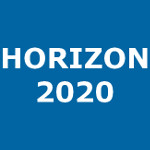Predicting subclinical atherosclerosis in low-risk individuals
Fernández-Alvira, Juan Miguel ; Fuster, Valentín ; Pocock, Stuart ; Sanz, Javier ; Fernández-Friera, Leticia ; Laclaustra, Martín ; Fernández-Jiménez, Rodrigo ; Mendiguren, José ; Fernández-Ortiz, Antonio ; Ibáñez, Borja ; Bueno, Héctor
Resumen: Background:
The ideal cardiovascular health score (ICHS) is recommended for use in primary prevention. Simpler tools not requiring laboratory tests, such as the Fuster-BEWAT (blood pressure [B], exercise [E], weight [W], alimentation [A], and tobacco [T]) score (FBS), are also available.
Objectives:
The purpose of this study was to compare the effectiveness of ICHS and FBS in predicting the presence and extent of subclinical atherosclerosis.
Methods:
A total of 3,983 participants 40 to 54 years of age were enrolled in the PESA (Progression of Early Subclinical Atherosclerosis) cohort. Subclinical atherosclerosis was measured in right and left carotids, abdominal aorta, right and left iliofemoral arteries, and coronary arteries. Subjects were classified as having poor, intermediate, or ideal cardiovascular health based on the number of favorable ICHS or FBS.
Results:
With poor ICHS and FBS as references, individuals with ideal ICHS and FBS showed lower adjusted odds of having atherosclerotic plaques (ICHS odds ratio [OR]: 0.41; 95% confidence interval [CI]: 0.31 to 0.55 vs. FBS OR: 0.49; 95% CI: 0.36 to 0.66), coronary artery calcium (CACS) ≥1 (CACS OR: 0.41; 95% CI: 0.28 to 0.60 vs. CACS OR: 0.53; 95% CI: 0.38 to 0.74), higher number of affected territories (OR: 0.32; 95% CI: 0.26 to 0.41 vs. OR: 0.39; 95% CI: 0.31 to 0.50), and higher CACS level (OR: 0.40; 95% CI: 0.28 to 0.58 vs. OR: 0.52; 95% CI: 0.38 to 0.72). Similar levels of significantly discriminating accuracy were found for ICHS and FBS with respect to the presence of plaques (C-statistic: 0.694; 95% CI: 0.678 to 0.711 vs. 0.692; 95% CI: 0.676 to 0.709, respectively) and for CACS ≥1 (C-statistic: 0.782; 95% CI: 0.765 to 0.800 vs. 0.780; 95% CI: 0.762 to 0.798, respectively).
Conclusions:
Both scores predict the presence and extent of subclinical atherosclerosis with similar accuracy, highlighting the value of the FBS as a simpler and more affordable score for evaluating the risk of subclinical disease.
Idioma: Inglés
DOI: 10.1016/j.jacc.2017.09.032
Año: 2017
Publicado en: JOURNAL OF THE AMERICAN COLLEGE OF CARDIOLOGY 70, 20 (2017), 2463-2473
ISSN: 0735-1097
Factor impacto JCR: 16.834 (2017)
Categ. JCR: CARDIAC & CARDIOVASCULAR SYSTEMS rank: 3 / 128 = 0.023 (2017) - Q1 - T1
Factor impacto SCIMAGO: 11.061 - Cardiology and Cardiovascular Medicine (Q1)
Financiación: info:eu-repo/grantAgreement/EC/H2020/707642/EU/Comprehensive Lifestyle Intervention Project (CLIP)/CLIP
Tipo y forma: Artículo (Versión definitiva)
 Debe reconocer adecuadamente la autoría, proporcionar un enlace a la licencia e indicar si se han realizado cambios. Puede hacerlo de cualquier manera razonable, pero no de una manera que sugiera que tiene el apoyo del licenciador o lo recibe por el uso que hace. No puede utilizar el material para una finalidad comercial. Si remezcla, transforma o crea a partir del material, no puede difundir el material modificado.
Debe reconocer adecuadamente la autoría, proporcionar un enlace a la licencia e indicar si se han realizado cambios. Puede hacerlo de cualquier manera razonable, pero no de una manera que sugiera que tiene el apoyo del licenciador o lo recibe por el uso que hace. No puede utilizar el material para una finalidad comercial. Si remezcla, transforma o crea a partir del material, no puede difundir el material modificado.
Exportado de SIDERAL (2025-01-14-15:52:02)
Visitas y descargas
The ideal cardiovascular health score (ICHS) is recommended for use in primary prevention. Simpler tools not requiring laboratory tests, such as the Fuster-BEWAT (blood pressure [B], exercise [E], weight [W], alimentation [A], and tobacco [T]) score (FBS), are also available.
Objectives:
The purpose of this study was to compare the effectiveness of ICHS and FBS in predicting the presence and extent of subclinical atherosclerosis.
Methods:
A total of 3,983 participants 40 to 54 years of age were enrolled in the PESA (Progression of Early Subclinical Atherosclerosis) cohort. Subclinical atherosclerosis was measured in right and left carotids, abdominal aorta, right and left iliofemoral arteries, and coronary arteries. Subjects were classified as having poor, intermediate, or ideal cardiovascular health based on the number of favorable ICHS or FBS.
Results:
With poor ICHS and FBS as references, individuals with ideal ICHS and FBS showed lower adjusted odds of having atherosclerotic plaques (ICHS odds ratio [OR]: 0.41; 95% confidence interval [CI]: 0.31 to 0.55 vs. FBS OR: 0.49; 95% CI: 0.36 to 0.66), coronary artery calcium (CACS) ≥1 (CACS OR: 0.41; 95% CI: 0.28 to 0.60 vs. CACS OR: 0.53; 95% CI: 0.38 to 0.74), higher number of affected territories (OR: 0.32; 95% CI: 0.26 to 0.41 vs. OR: 0.39; 95% CI: 0.31 to 0.50), and higher CACS level (OR: 0.40; 95% CI: 0.28 to 0.58 vs. OR: 0.52; 95% CI: 0.38 to 0.72). Similar levels of significantly discriminating accuracy were found for ICHS and FBS with respect to the presence of plaques (C-statistic: 0.694; 95% CI: 0.678 to 0.711 vs. 0.692; 95% CI: 0.676 to 0.709, respectively) and for CACS ≥1 (C-statistic: 0.782; 95% CI: 0.765 to 0.800 vs. 0.780; 95% CI: 0.762 to 0.798, respectively).
Conclusions:
Both scores predict the presence and extent of subclinical atherosclerosis with similar accuracy, highlighting the value of the FBS as a simpler and more affordable score for evaluating the risk of subclinical disease.
Idioma: Inglés
DOI: 10.1016/j.jacc.2017.09.032
Año: 2017
Publicado en: JOURNAL OF THE AMERICAN COLLEGE OF CARDIOLOGY 70, 20 (2017), 2463-2473
ISSN: 0735-1097
Factor impacto JCR: 16.834 (2017)
Categ. JCR: CARDIAC & CARDIOVASCULAR SYSTEMS rank: 3 / 128 = 0.023 (2017) - Q1 - T1
Factor impacto SCIMAGO: 11.061 - Cardiology and Cardiovascular Medicine (Q1)
Financiación: info:eu-repo/grantAgreement/EC/H2020/707642/EU/Comprehensive Lifestyle Intervention Project (CLIP)/CLIP
Tipo y forma: Artículo (Versión definitiva)
Exportado de SIDERAL (2025-01-14-15:52:02)
Enlace permanente:
Visitas y descargas
Este artículo se encuentra en las siguientes colecciones:
Artículos
Registro creado el 2025-01-13, última modificación el 2025-01-14
